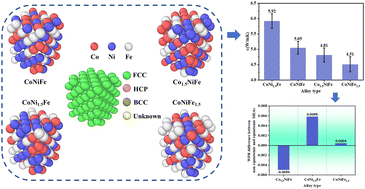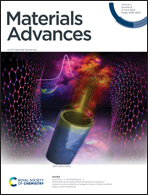Theoretical insights into the lattice thermal conductivity and thermal expansion of CoNiFe medium-entropy alloys†
Abstract
Medium-entropy alloys (MEAs) have important potential applications in aerospace as well as nuclear energy due to their excellent mechanical and thermodynamic properties. In this paper, we calculate the lattice thermal conductivity of CoNiFe MEA using the equilibrium molecular dynamics method. We investigate the impact of the elemental concentration in MEAs (Co1.5NiFe, CoNi1.5Fe, and CoNiFe1.5) on their lattice thermal conductivity. Increasing the Co and Fe concentration will slightly decrease the lattice thermal conductivity. On the other hand, by increasing the Ni concentration, its lattice thermal conductivity increases up to 17%. Such anomalous lattice thermal conductivity enhancement is explained by an increase in the mode participation rate and acoustic phonon lifetime. Moreover, the impacts of tensile strain and temperature on lattice thermal conductivity are explored. This study contributes to the understanding of the thermal behavior of MEAs and promotes the development of MEAs in the field of thermal science.



 Please wait while we load your content...
Please wait while we load your content...